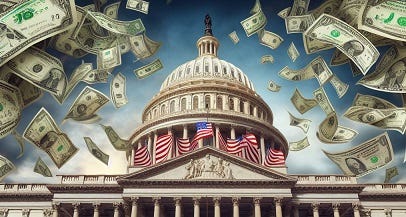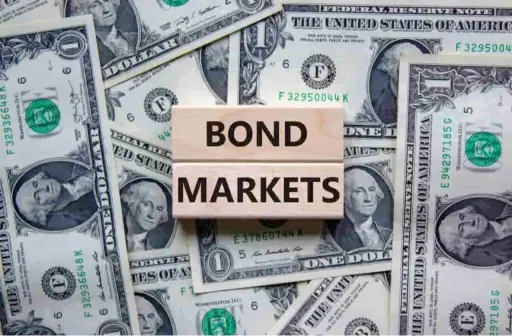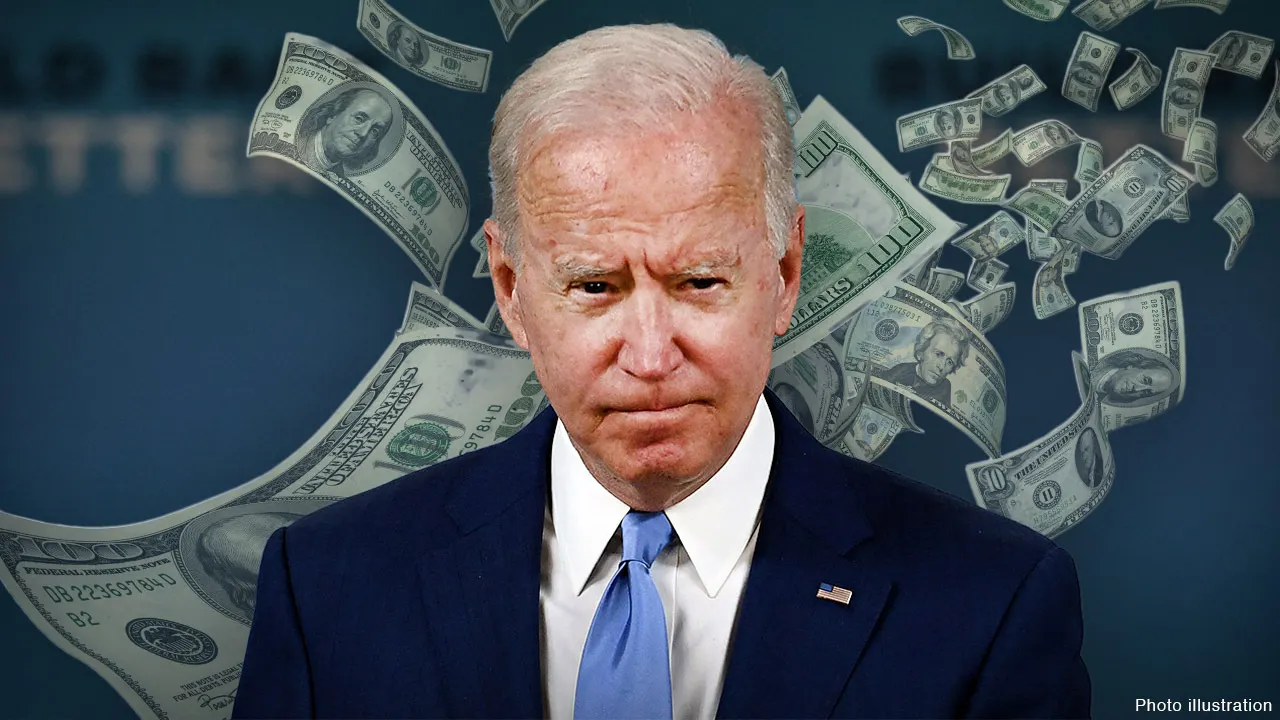The U.S. government plays a key role in shaping investment strategies through regulatory frameworks, fiscal policies, and incentives. Explore how these factors impact business decisions and investment trends
How U.S. Government Policies Influence Investment Approaches
The U.S. government has a profound influence on the nation’s investment landscape, with policies that guide, regulate, and incentivize both domestic and international investments. From tax reforms to trade policies and regulatory frameworks, government actions help shape the investment strategies of businesses, institutional investors, and individuals alike. Understanding the government's role is crucial for anyone looking to navigate the U.S. investment environment and optimize investment decisions for growth, profitability, and sustainability.
1. Regulatory Policies: Creating a Framework for Investment
The U.S. government establishes a comprehensive regulatory environment to ensure the stability, transparency, and fairness of financial markets. These regulations affect everything from securities trading to corporate governance, shaping how investments are made.
Securities and Exchange Commission (SEC) Oversight
The SEC plays a vital role in protecting investors and maintaining fair, orderly, and efficient markets. By enforcing regulations around securities trading, reporting requirements, and corporate disclosures, the SEC ensures that companies are transparent in their dealings, thus reducing risks for investors.
- Investment Protection: Through regulations like the Securities Act of 1933 and the Securities Exchange Act of 1934, the SEC safeguards investors by ensuring they have access to accurate and timely information.
- Market Integrity: The SEC enforces rules that prevent fraudulent activities, such as insider trading, and promotes a fair environment for investors to make informed decisions.
Federal Reserve and Monetary Policy
The U.S. Federal Reserve has a significant role in shaping investment strategies through its control of monetary policy. The Fed influences interest rates, inflation, and liquidity in the economy, which in turn impacts the returns on investments.
- Interest Rate Policy: By adjusting interest rates, the Federal Reserve indirectly affects the cost of borrowing and the attractiveness of investments. A low-interest-rate environment often encourages more borrowing and investing, while higher rates may dampen consumer spending and business investments.
- Inflation Control: The Fed’s efforts to control inflation through monetary policy help maintain the purchasing power of consumers and the value of investments, particularly fixed-income securities.
2. Fiscal Policies and Tax Incentives
The U.S. government’s fiscal policies, particularly tax reforms, play a significant role in influencing investment strategies. By offering tax breaks, credits, and incentives, the government encourages businesses and individuals to invest in specific sectors and projects.
Tax Cuts and Corporate Investment
Tax cuts, such as those introduced under the Tax Cuts and Jobs Act (TCJA) of 2017, lower corporate tax rates, making the U.S. a more attractive destination for both domestic and foreign investment. The reduced tax burden on businesses allows companies to reinvest their savings into operations, growth initiatives, and expansion efforts.
- Capital Investment Incentives: The U.S. government also offers accelerated depreciation schedules for businesses investing in new equipment and infrastructure. This incentivizes companies to make capital expenditures that stimulate job creation and economic growth.
- R&D Tax Credits: To encourage innovation, the government offers generous tax credits for research and development (R&D) activities. Companies in industries like technology, biotechnology, and clean energy can benefit from these credits to reduce the cost of innovation.
Tax-Advantaged Investment Vehicles
The government encourages individual investment through tax-advantaged accounts like 401(k)s, IRAs, and Health Savings Accounts (HSAs). These vehicles allow investors to defer taxes on their earnings, which can compound over time, leading to higher returns in the long term.
- Retirement Savings Plans: Through policies like 401(k) employer contributions and tax deferrals on IRA accounts, the government incentivizes long-term savings and investment, helping individuals prepare for retirement.
- ESG Tax Incentives: Policies that support environmental, social, and governance (ESG) investing also offer tax benefits, encouraging individuals and businesses to invest in sustainable projects and socially responsible companies.
3. Trade and Foreign Investment Policies
The U.S. government’s trade policies have a significant impact on investment strategies, particularly for businesses engaged in global markets. Trade agreements, tariffs, and foreign investment policies dictate the flow of capital and goods between the U.S. and its trading partners.
Trade Agreements and Global Market Access
Trade agreements such as the United States-Mexico-Canada Agreement (USMCA) and previous agreements like the Trans-Pacific Partnership (TPP) (before the U.S. withdrawal) enhance access to foreign markets and encourage businesses to invest in international expansion.
- Market Expansion: These agreements lower tariffs, reduce barriers to entry, and increase market access for U.S. companies. Investors benefit from policies that foster international trade, as companies can tap into new revenue streams and growth opportunities abroad.
- Supply Chain Optimization: Trade policies that reduce tariffs on imported goods help businesses lower their operating costs, leading to higher profit margins and more competitive investment opportunities.
Foreign Direct Investment (FDI) Policies
The U.S. government actively encourages foreign direct investment (FDI) through policies that make it easier for foreign investors to establish businesses or acquire U.S.-based companies.
- Tax Incentives for Foreign Investment: To attract foreign capital, the U.S. offers tax incentives and favorable regulations that allow foreign investors to access American markets with fewer restrictions.
- National Security and Regulatory Oversight: While foreign investment is encouraged, there are regulations in place to ensure that foreign investments do not compromise national security. The Committee on Foreign Investment in the United States (CFIUS) reviews foreign investments in critical industries such as defense, energy, and technology.
4. Government Stimulus and Economic Recovery Plans
In times of economic downturn, such as during the COVID-19 pandemic, the U.S. government plays a crucial role in supporting business and investment activity through stimulus packages and recovery plans. These interventions help stabilize the economy and provide businesses with the capital needed to weather financial challenges.
Stimulus Packages and Economic Relief
The government uses stimulus packages to inject capital into the economy, either directly through checks to individuals or through business loans and grants.
- Paycheck Protection Program (PPP): Initiatives like the PPP provide financial relief to small businesses by offering low-interest loans that can be forgiven if used for employee retention and operational expenses.
- Tax Deferrals and Credits: The government offers tax deferrals and credits to businesses affected by economic disruptions, helping them maintain cash flow and continue operations.
Infrastructure Investments and Long-Term Growth
Government policies supporting infrastructure investments, such as the Bipartisan Infrastructure Law, stimulate economic growth by providing capital for the construction and upgrade of national infrastructure systems. This leads to job creation, increased demand for goods and services, and opportunities for investors in sectors like construction, transportation, and technology.
5. Shaping Long-Term Investment Trends: Sustainability and Innovation
The U.S. government is also focusing on sustainable investments and innovation, with policies that encourage businesses to align with environmental, social, and governance (ESG) principles. These policies shape long-term investment strategies and open up new opportunities for growth.
Green Energy and Sustainability Policies
Policies that promote renewable energy, clean technology, and carbon reduction are transforming the investment landscape.
- Green Bonds and ESG Investments: The U.S. government encourages the growth of green bonds and ESG investing through tax incentives and regulations that reward businesses adopting sustainable practices.
- Clean Energy Incentives: Tax credits for clean energy projects, such as solar and wind energy, provide attractive opportunities for investors focused on sustainability
















